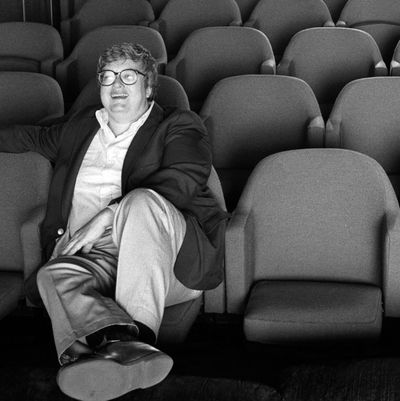
Steve James’s Roger Ebert documentary, Life Itself, is a tender portrait of the late film critic, who managed to put an apparently Brobdingnagian ego to benevolent, ultimately life-affirming ends. James—whose Hoop Dreams was the beneficiary of a fervent campaign by Ebert—cuts back and forth between Ebert’s last days and the story of his rise, first as a daily newspaper critic for the Chicago Sun-Times, then as co-host with Gene Siskel of Sneak Previews (later Siskel & Ebert & the Movies). Friends and colleagues allude to the hugeness, the Chicago-ness of the man—the appetite for food, booze (until he sobered up in 1979), raucous storytelling, and sex. (“He had the worst taste in women … gold-diggers, opportunists, or psychos,” says one old pal.) But that portrait is poignantly at odds with the man who appears on-camera missing much of his lower face, a flap of skin hanging in the approximate shape of a chin. The surgery—which eliminated Ebert’s ability to speak, eat, or drink—gives his face a simpleminded, Quasimodo-like cast that is constantly belied by the words he types and that are spoken aloud by a computer. Not even The Diving Bell and the Butterfly drives home the mind-body schism as movingly.
According to friends and colleagues, Ebert was “facile”—he never spent longer than half an hour writing a review. He was an old-fashioned newspaperman: clear, succinct, logical. His concentration was phenomenal. He had the ability to outline in his head, to write (and speak) in whole paragraphs. That’s one reason he paired so well with Siskel, no less an egomaniac but a random sputterer, an often touchingly vulnerable blowhard.
James does a superb job chronicling their hate-love relationship, suggesting in the end that apart from his wife, Chaz, Ebert never had a truer bond. That might be because no one else got away with challenging him—he hated being jarred out of those elegant paragraphs. Nevertheless, he reached out to other critics. A few of the best—A. O. Scott, Jonathan Rosenbaum, Richard Corliss—attest to his influence and personal generosity. More surprising is the number of directors who appear and with whom he hobnobbed: Werner Herzog, who calls Ebert “a soldier of cinema, a wounded comrade,” and Martin Scorsese, who credits Ebert and Siskel with shoring him up at a very low point in his career. But it’s easy to see why they deferred to him. He was, for a time, the most powerful critic in America and a TV celebrity. He was one of them.
Love him or not, the modern film critic must define himself or herself against Roger Ebert—especially in how he adapted to changing technology, finally building a community via blogging and tweeting around his titanic self. The modern human being must define himself against how he lived his final years, when he lost his (big) mouth and discovered an even stronger, truer voice.
*This article appears in the June 30, 2014 issue of New York Magazine.


